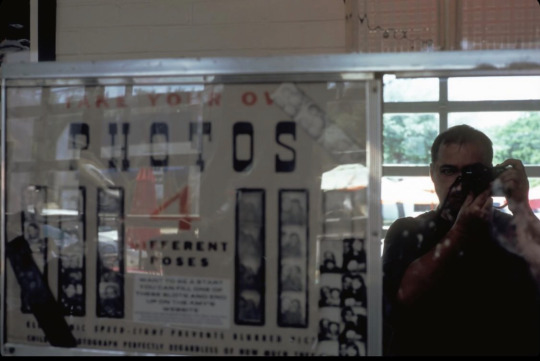Text
I had a pleasure meeting Tanner this is a blog format where I interview people about film photography and their experience, film stocks etc. If you want to be featured in our next feature please be sure to comment below! Thanks Lens Lab!
1. I specialize in truth-telling photography for weddings & couples with an emphasis in connection & experience. My nature, landscape, & film photography is rooted in the same three principles of Truth, Connection, & Experience.
2. When available, Kodak Portra 400 is my constant go-to for color film photography! It's so versatile & has nostalgic, earthy tones. For black & white I prefer Kodak Tri-X 400.
3. I shoot my primary 35mm film with a Nikon F100, & I frequently shoot with a Canon AE-1 and Kodak M35 point-n-shoot.
4. I've never used an external light meter, I've used cameras with tried & trusted in-camera light meters. I shoot in fast-paced, dynamic scenes like wedding days, so working on the move is necessary!
5. If you're picking up film photography for the first time, start slow! Shoot sparingly, be choosy with your compositions & light, know that film has more forgiving highlights than shadows, so shooting overexposed is preferred to under.
1 note
·
View note
Text
I had a pleasure meeting baisao, this is a blog format where I interview people about film photography and their experience, film stocks etc. If you want to be featured in our next feature please be sure to comment below! Thanks Lens Lab!
1. How would you explain your photography style to your audience?
I have two goals with my photography: to demonstrate that the ordinary is extraordinary and to provide emotional emptiness/stillness so there is room for the viewer too. Some of the most spiritually impactful events in my life have occurred when seeing something simple and ordinary as though with new eyes. Extraordinary things are everywhere, we just need to be reminded to look at them, without subjective judgements. In truth there is no difference between the observer and the observed, subject and object.
2. What’s your favorite film stock?
Ilford FP4+ is my favorite general purpose B&W film stock, especially when paired with Pyrocat-HD as a developer. I get highlights that go on forever. Of the available color films, I am preferring Ektar at the moment. I’m disinterested in nostalgic looking grain and poor dynamic range of some of the popular films I’ve seen lately. Those are gimmicky films for gimmicky photography. I don’t want to participate in that. There are other B&W and color films that I prefer for special situations like very long exposures or day-for-night. Since most of those have been discontinued, I keep a dragon’s hoard of film stocks in the freezer.
3. Do you have more then one film camera?
All of my cameras are film cameras: 35mm, medium format, and large format. My first camera was digital but I simply did not enjoy the process. My favorite two camera systems could not be more different from each other: I like one because it doesn’t stand between me and the subject and I like the other because it gets in the way and forces me to slow down.
4. Have you tried a light meter?
I’ve used quite a few light meters and find them indispensable. Metering is an art. The Sekonic Studio Deluxe II is my favorite incident meter. It doesn’t need batteries, is faster for me than a phone metering application, and gives me exposure data at a glance. I’ve used the Gossen Luna Pro and it is larger and heavier than the Sekonic Studio Deluxe II. The Gossen meters low light conditions better but I’ve practiced low light exposures over the years and can identify the exposure faster than any meter. I’ve used various modern and vintage spot meters too but have found they are more useful for large format B&W photography and learning how to estimate middle-gray.
5. What would you say to someone starting out film photography?
Film photography is a mature technology with finer points being lost. Talk to old timers. Find local experts & enthusiasts, even if they are many generations older, and learn from them. The rabbit hole is deep and diving into it will help you understand what you’re doing in those moments when you’re jolted out of that intuitive space and are presented with a question. This knowledge allows you to hack the format. Eventually it should be integrated and each aspect becomes as intuitive as riding a bicycle. Best of all, you can keep this knowledge alive.
6. What’s the relationship between your camera and you? Please provide a few pictures of yourself, and your camera that you enjoy using the most!
My cameras are my other eyes. I take a camera with me everywhere, if only as a reminder to be present with the world around me.
7. What’s your favorite camera brand and why? I don’t think I have a favorite brand but so do have two favorite camera systems. I’ve used a lot of camera systems and each have their pros and cons. I’ve tried multiple systems from each of these makers: Canon, Nikon, Mamiya, Leica, Rollei, and Yashica. My favorite two camera systems have been the Leica M6 Classic and any Rolleiflex. The former seems to disappear in my hands while the latter forces me to slow down. Despite these differences, they are both small and discreet with optics that are not obnoxiously clinical.
8. If you would like to send this to someone else to get them featured please read 9.
9. To proceed with featuring someone else, please put their information. Such as Instagram or email! Thanks Lens Lab!
@chuck4x5
I like Chuck’s large format photography because he has a unique but not exaggerated look and captures scenes of daily life in West Texas.

1 note
·
View note